I’m currently working around the touch events of IE10 and even if I’m lucky enough to have a Windows 8 tablet, I was looking for a simpler way to do basic tests on my classical laptop without switching to the tablet each time. While looking for that, I’ve discovered several tips & tricks that may help you debugging the IE10 touch events in your code without even using a touch device. Nice side effect: the same approach will also help you to test & debug your responsive web design!
Pre-requisites: to follow this tutorial, you need first to:
1 – Download & install Windows 8 Release Preview on your machine: http://preview.windows.com
2 – Download & install Visual Studio 2012 RC Express for Windows 8: http://msdn.microsoft.com/en-us/windows/apps/br229516
The touch events model of Internet Explorer 10
If you don’t know yet how our touch implementation works, you should first read these 3 articles:
As a complement resource, you may have a look to the Pointer.JS library that mimics the IE10 model for the other browsers.
The Windows 8 Simulator to simulate touch
The Windows Simulator is installed with the development tools and is normally designed to help you testing & debugging your Metro Style Apps. You may learn a bit more details here: First look at Windows Simulator
Still, nothing prevents us to use it for debugging web applications running inside IE10 in the simulator. Let me show you how.
1 – Launch the simulator by launching the Microsoft.Windows.Simulator.exe located inside “Program Files (x86)\Common Files\Microsoft Shared\Windows Simulator\11.0â€
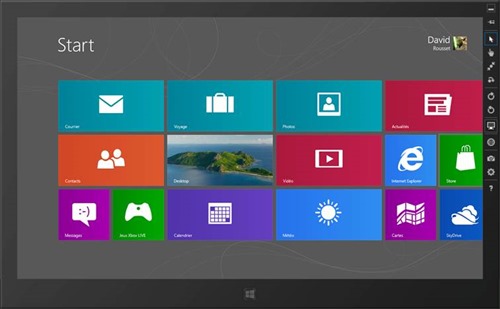
And click on the desktop icon.
2 – Launch IE10, navigate to the “Internet Options†and “Advanced†tab. Check that both “Disable script debugging (Internet Explorer)†& “Disable script debugging (Other)†are not checked: Read the rest of this entry »
In the final article in this series, we move from content isolation and validation to an examination of how modern browsers protect your mashup’s users. By the end of this article, you’ll understand some of the safety measures that browsers provide against malicious input from mashup providers and see how a strategy that incorporates all the elements I’ve covered leads to a more secure mashup.
The Window into Your World
In the previous articles, I described building a mashup application for the fictional Contoso company. This mashup creates a world in which data from various locations interacts to create a sum greater than its parts. All the components run inside a Web browser window that users interact with to gain access to this world. These windows help protect users the same way that real windows protect us from the cold, UV light, theft, and other conditions. And just like with real windows, the level of protection you get depends on quality—in this case, the quality of your browser.
Let’s examine three protections that browsers offer to mashups that require very little or no interaction from users. This ambient protection doesn’t need a user to activate it. It’s ready when it’s needed.
Seeds in Your Heap
One Web attack that doesn’t get a lot of attention in the popular media is the heap spray. In a heap spray, the attacker plants bytes (lots of them) in the heap at specific locations to trigger an exploit. Malware attacks are broken down into a few phases: heap sprays address the Delivery phase, and whatever is sprayed into the heap becomes the Bomb phase. This kind of attack is not new, and once launched, it can produce some extremely nasty effects. A great tutorial on heap spray attacks is available at The Grey Corner, where the author uses JavaScript to inject a heap spray into the browser. The result of the tutorial is the execution of a reverse shell to control the victim’s system. By using tools like Metasploit, attackers can craft payloads that will cause real problems for your users.
Imagine in our mashup application that the Physical Security department’s JSONP travel-alert data feed is compromised. The attacker who compromised the feed embedded a heap spray that will be delivered when the JSONP method is executed to return the JSON object. This attack vector could spell disaster for your users if their browser is not protecting them. Read the rest of this entry »
One of the most stubbornly persistent misconceptions about HTML5 is that it’s effectively unusable for years to come. With that myth and the uncertainty over fragmented browser support for HTML5’s new features, it’s easy to find someone with reasons for avoiding HTML5 right now.
But while some features are legitimately not ready for use in production, many of the new APIs in HTML5 have solidified enough to be relied on in newer browsers like Chrome, Firefox 4 and Internet
Explorer 9. In fact, even Internet Explorer 6 includes support for one of HTML5’s “new†features, contentEditable. More importantly, many of the new features in HTML5 are compelling enough that waiting another decade to begin using them doesn’t make sense.
Cross-Browser Support
The most nagging issue with making the leap to HTML5 is that most of us have no choice but to support a variety of older browsers that have little or no support for the most useful new APIs. The thought of adopting a new Web technology conjures up nightmares of cross-browser inconsistencies, unmaintainable branching code, browser sniffing and a host of other problems. However, there’s an underappreciated technique that can entirely mitigate those problems for certain new features of HTML5 and still allow you to develop against the new APIs as though all your users had upgraded their browsers overnight: polyfills.
Polyfilling is a term coined by Remy Sharp to describe an approach for backfilling missing functionality in a way that duplicates the missing API. Using this technique allows you to write application-specific code without worrying about whether or not each user’s browser implements it natively. In fact, polyfills aren’t a new technique or tied to HTML5. We’ve been using polyfills such as json2.js, ie7-js, and the various fallbacks for providing transparent PNG support in Internet Explorer for years. The difference is the proliferation of HTML5 polyfills in the last year. Read the rest of this entry »
Paint 4 Kids is a Windows Store app, specifically designed for kids. A simple app for coloring and drawing. You can read of the consumer’s features directly from the Windows Store site, where you can also see some screen shots. For this article, you can simply think of an app that has several drawings and you can interact with them.
From a technical perspective, it is entirely built using standard web technologies, like HTML, CSS, JavaScript and SVG. Consider an important aspect here: with Windows 8, we are writing an app reusing our web skill and we are developing for the web platform, using the underlying HTML5 support of the Internet Explorer 10 rendering engine. So one immediate benefit is that we do not have to test and support all the different browsers versions and do not have to use some polyfills to emulate the new API features in old browsers. We can use the best of the web platform and use some specific API of Windows 8 directly in JavaScript.
This article is about to discuss the use of Scalable Vector Graphics (SVG) in Paint 4 Kids, starting from some requirements of the project, going to address them and some pitfalls using SVG. I hope that some of these considerations could apply to your apps as well.
Requirements and why using SVG
Windows Store app give you a great opportunity in terms of markets where you can distribute and sell your apps and in terms of devices where your app can run. Think that your app can be used on devices with different screen sizes, different screen resolutions and pixel densities. This must be considered and looking through this article gives you a very good technical understanding on how to scale your app to different screens and how to test your app using the Windows Simulator.
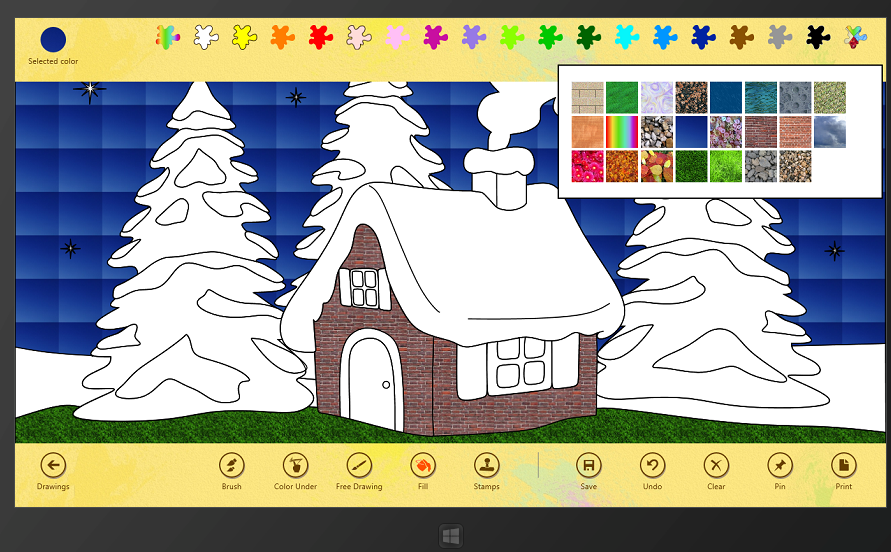
One of the requirement is that we want to have a single drawing that will show well at different resolutions. We ended to use SVG that is a vector image format for two-dimensional graphics. Our approach is to create a drawing at a specific resolution 2560×1440, see later for details, scaling down to the current user’s resolution. Another advantage is that is very simple and fast to fill a path with a color in SVG, that it is one of the main feature of the app. When a user tap the screen it is simple to intercept the corresponding portion of the drawing and fill the path with a specific color.
Read the rest of this entry »
There’s no doubt about it. Wherever developers look and whoever they talk to, mobile is at the top of the list. Talk to a C-level executive, and the conversation turns to mobile, and the question “How do I get me some of that?†comes up. Talk to other developers, and they tell you they’re targeting mobile devices. Mobile has become a big deal as smartphones have taken hold in the consumer marketplace.
In the years leading up to the current focus on mobile applications and devices, Web developers have been adding more and more client-side functionality to their applications. You can see this in the use of client-side JavaScript libraries like jQuery.
With the growth of the market for mobile devices, the ability to create applications that run across platforms is very important for developers and for businesses that are trying to keep their expenses in check. There are a set of applications, mostly in the area of content consumption (think Amazon.com), that run well in a mobile Web browser. Unfortunately, there are differences between Web browsers on various mobile devices. The goal of the recently introduced jQuery Mobile (jQM) library is to provide cross-browser support to allow developers to build applications that can run across the various mobile Web browsers and provide the same—or at least a very similar—user interface.
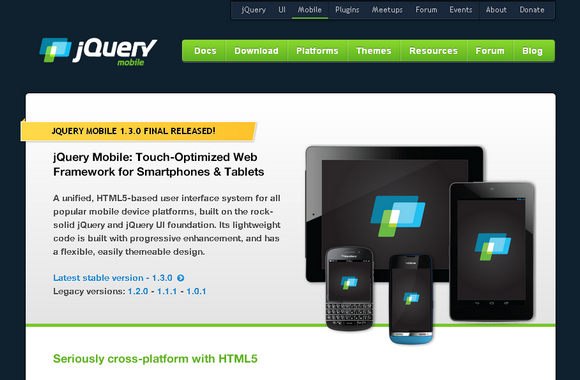
The jQuery Mobile library was introduced in an alpha release in the fall of 2010 and released to manufacturing in November 2011. At the time of this writing, the current version of jQuery Mobile is 1.1.1. By the time you read this, jQuery Mobile will almost certainly have reached version 1.2.0. The library has been embraced by Microsoft, Adobe and other companies for mobile Web development. In August 2011, jQM had 32 percent market share compared with other mobile JavaScript frameworks such as iWebKit and jQTouch. This market share is impressive given that it started from zero little more than 12 months ago, and the 1.0 release is the first officially supported release. Read the rest of this entry »
I’m currently spending most of my time explaining to students, hobbyists, professional developers and teachers how to build games using HTML5. I then recently thought: rather than keeping all these details for small audiences, wouldn’t it be smarter to share it with you?
This article is then based on my own experience. I will probably omit some crucial things some of you may know. But it will try to update this blog post along with my own new discovers and of course based on the feedbacks you will kindly provide in the comments or via Twitter.
But why are so many people currently interested in HTML5 Gaming?
Well, simply because today, we can really use HTML5 to target multi-platforms using the same code: for desktop machines of course (with IE9/IE10, Firefox, Chrome, Opera & Safari), for iOS & Android tablets & phones and Windows 8, and its future associated millions of tablets & PC, is also warmly welcoming HTML5 Games! I then frequently see some HTML5 gaming projects ported to each of these platforms with almost no effort.
What’s more, the modern JavaScript engines performance coupled with the GPU hardware-accelerated graphics layers enable us to build great games in HTML5 with confidence.
Note: we will only talk about the <canvas> tag of HTML5 and about SVG in this article.
Canvas & SVG: 2 ways to draw on the screen
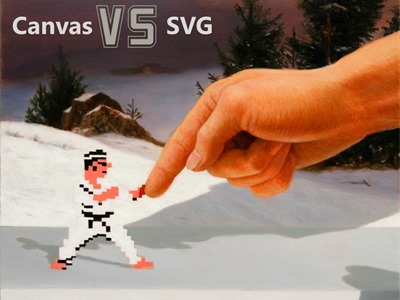
The first thing you need to understand before building your first HTML5 game is how to draw nice objects on the screen. There are 2 ways to do that and to better understand their differences, you should start by reading this article from Patrick Dengler (member of the SVG W3C Working Group): Thoughts on when to use Canvas and SVG
On my side, I’ve re-used parts of Patrick’s materials to build a 45min internal session for my Microsoft’s colleagues last year. You can watch it via this video I’ve made (using HTML5 <video> of course!): Read the rest of this entry »
Cool Kitten is a Parrallax Scrolling responsive framework written by Jalxob. It is a collection of HTML/CSS and JavaScript files to be used for web designers and developers.
Cool Kitten is responsive, which is the best way to have a website with abilities to be viewed in every computer, tablet and mobile. It supports Parallax Scrolling, which makes a beautiful visual effect that brings a second life to every slide.
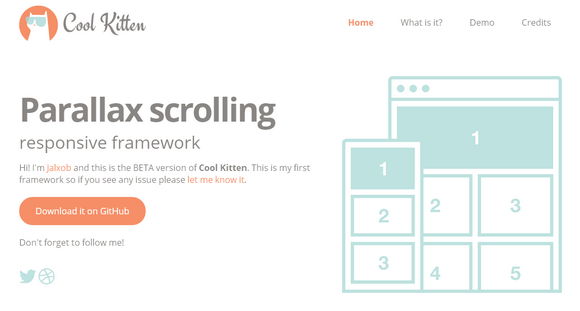
Requirements: –
Demo: http://jalxob.com/cool-kitten/
License: License Free
BoardJS is a JavaScript library that simplifies the way of making interactive presentations, stories and ads.
The library works by writing commands such as adding texts, images, moving objects and showing tooltips, and once the .go() function is called, commands will be executed one by one.
The list of commands will be interpreted in the library as a timeline.
If you are familiar with animations in Microsoft Office, you will notice that BoardJS is the a bit the same but for developers and more interaction.
The benefits and features of the library are:
- Optimized and fast
- Cross browser and platform
- Changes the presentation without refreshing the page
- Applies commands to more than one object at a time
- Easy to update presentations
- Uses only HTML, JavaScript and CSS
- You can add multiple shows in the same page.
Take a look at the examples in the BoardJS’s site. If you get familiar with commands, any presentation should take about 30 minutes to finish the code. What will take your time is thinking about the presentation and preparing its content. Now, let’s make an example to make the image clear. Read the rest of this entry »
HTML5 features in modern browsers like Internet Explorer 10 make possible a whole new class of Web applications and gaming scenarios. This two-part article demonstrates how I’ve used some of these new features to modernize my last HTML5 game, HTML5 Platformer. In Part 1 of this article, I covered how to use CSS3 3D Transform, Transitions, and Grid Layout. In this article, I’ll show you how to use the offline, drag-and-drop and file APIs to implement some interesting new ideas.
Playing a Game in Offline Mode
The original version of my game worked only if your device was currently connected to the Internet. If you wanted to play to my fabulous game while you were on the train, in a taxi, or somewhere else without an Internet connection, you were out of luck—stuck without access to the awesomeness. And that’s too bad, because there really isn’t anything in my game that needs a live connection to the Web server once all the resources have been downloaded. Fortunately, offline APIs provide a solution for this in HTML5.
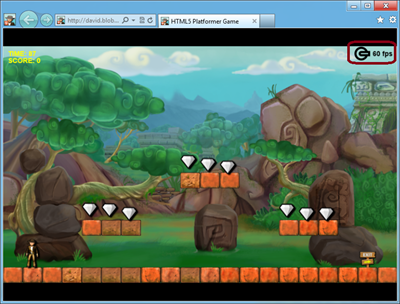
Read the rest of this entry »
Hugo Giraudel offered a great overview of the CSS clip property and the rect() function. Codrops has published a tutorial: Putting CSS Clip to Work – Expanding Overlay Effect, which is going to create a neat and simple effect for revealing some extra content and expanding a fullscreen overlay.
The article will teach you how to leverage the CSS clip property to make a smooth transition when clicking on a box element. The idea is to show some kind of overlay as if it’s actually underneath the respective element. Clicking an element will create a cut-out effect, revealing another layer that will expand.
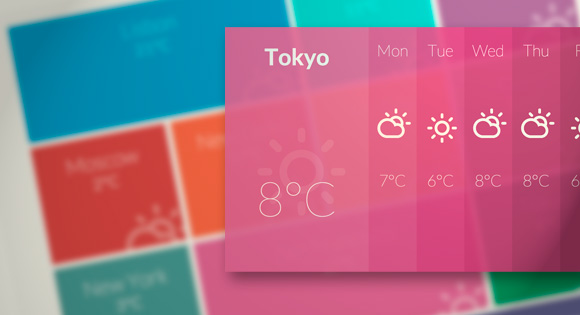
Requirements: CSS
Download Link: http://tympanus.net/Tutorials/ExpandingOverlayEffect/
License: License Free










